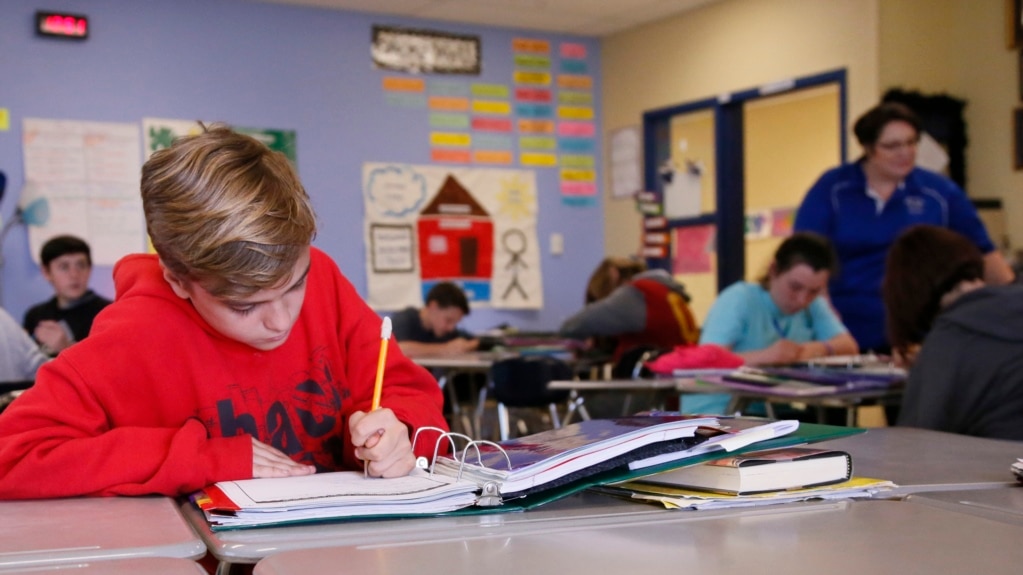The U.S. Department of Education expressed concern about long-term learning loss among teenagers who missed class time during the COVID-19 pandemic when schools closed.
The department released the scores from a national math and reading test, given to 13-year-olds, on June 21.
Eight thousand seven hundred students took the test in both math and reading in late 2022.
The results showed a drop of nine points in math and four points in reading compared to 2020, the last year the test was administered. The department’s information shows that those are the largest point decreases between tests recorded since 1973.
The test asks students to read short passages and identify the main idea or some facts. In math, students need to do simple multiplication and geometry.
Peggy G. Carr is the commissioner of the National Center for Education Statistics, part of the Department of Education. In a news release, she said the scores show that there are still “worrisome signs about student achievement” two years after most returned to in-person school.
Carr said she was hoping to see “green shoots of academic recovery,” but did not. Green shoots is a term officials use to describe signs of improvement.
The results of a similar test, given to younger students, came out in 2022. They also showed learning problems connected to missed class time for fourth and eighth graders.
Education officials said test scores were falling in the 10 years before the pandemic. However, they were mostly higher than the lows of 20 to 30 years ago.
The latest test scores show that American 13-year-old students are back to their lowest level in math since 1990 and lowest reading level since 2004.
An international reading test given to younger students in 2021 suggested some learning loss. However, the Progress in International Reading Literacy Study showed that most students reached basic reading standards. The test results showed that, of the countries taking part, more than one-third of test-takers reached high standards on average. The test, which is administered every five years, was given in 57 countries, mainly in Europe and the Middle East. There was a big difference in results between some countries.
In the U.S., officials say time away from school during the pandemic continues to affect students who were already having problems. Those students scored 12 to 14 points lower than others in their group in 2020. Stronger students also saw lower scores, but their scores dropped only six to eight points.
Minority students struggled the most. The lowest scores came from American Indians, whose scores dropped by 20 points. Black students’ scores were lower by 13 points. White students saw losses of six points and Asian students remained almost the same. The scores of all groups decreased.
Denise Forte is president of a nonprofit group, the Education Trust, based in Washington, D.C. She said the test shows the deep effect of the pandemic on Black, Latino and poor students.
She said all students want to do well, attend college, and get a job. “But they can’t if they continue to lose ground,” she said.
The learning problems of the pandemic continue in the U.S. although the federal government has spent billions of dollars to help students catch up.
Schools received money to offer extra help, hold classes in the summer and start other programs.
But Carr said the nation’s 13-year-olds, who were just 10 when the pandemic started, are still having trouble.
“We need to keep at it,” she said. “It is a long road ahead of us.”
Miguel Cardona is the U.S. Secretary of Education. He said the national test shows what the government had feared … that it would take “years of investment to reverse the damage.”
But he said “several states” are making progress on their own reading and math tests and are returning to levels that existed before the pandemic.
I’m Dan Friedell.

